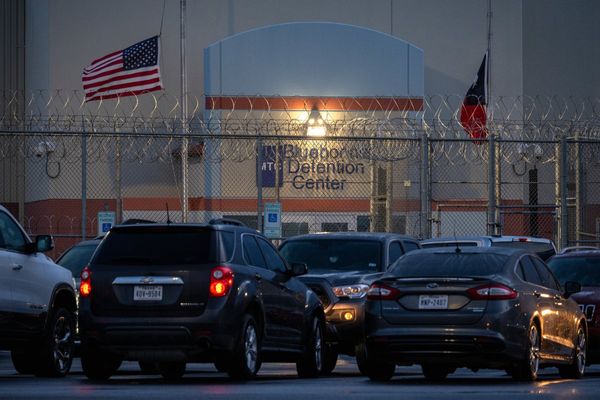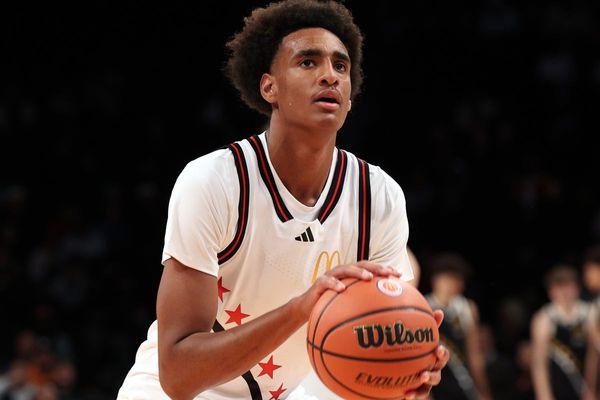
There is television before Homicide: Life on the Street and there is television after Homicide: Life on the Street.
That’s not hyperbole: the Baltimore-set police procedural, which ran on NBC for seven seasons and 122 episodes (plus the feature-length Homicide: The Movie), is not merely one of the greatest dramas ever to come across the airwaves, it led directly to the “Golden Age of Television” of the following decade.
Not that you’d be expected to know any of this. For as many awards and accolades as Homicide racked up over its run, it held the ignominious distinction of, as TV Guide once put it, “The Best Show You’re Not Watching”. Nor did it find its audience after the fact: despite some basic and pay-cable syndication and a DVD release, it’s been a hard show to track down. Until now: 25 years after it went off the air, the entirety of Homicide: Life on the Street is finally available to stream in the US on Peacock.
Debuting in January 1993, Homicide was part of a new wave of grittier, more grounded cop dramas to come in the wake of Hill Street Blues (including sister series Law & Order, with which it crossed over on numerous occasions). After the publication of his seminal book of reportage, Homicide: A Year on the Killing Streets, author David Simon – then a reporter for the Baltimore Sun who spent a year embedded with a Baltimore homicide unit – approached film-maker and fellow Bawlmer native Barry Levinson about turning it into a movie. Levinson thought it a better fit for TV and hired Donnie Brasco scribe Paul Attanasio to adapt.
Simon’s book gave the show’s writers plenty of characters and incidents on which to base episodes, but it also gave them something else, something not really seen in cop shows up to that point: a philosophy. This is immediately evident in the very first episode, via two small, but key moments.
In the more humorous of the two, Detectives Lewis (Clark Johnson), Crosetti (John Polito), and Munch (Richard Belzer, who would reprise the role in Law & Order SVU), loiter in a dank, rain-soaked alley, passing around a bottle of liquor and kvetching about their choice of career, when they spot a would-be mugger creeping up to them. Rather than spring into action like you’d expect heroic TV cops to do, the shambolic Munch takes out his badge, holds it up for the mugger to see, and yells at him: “Hey, we’re police! Go rob somebody else!”
Even more revealing is the scene immediately preceding this, in which brilliant investigator Frank Pembleton (the late Andre Braugher, who was justly rewarded for his work with a lead actor Emmy in 1998), runs down his interrogation process to new rookie partner Time Bayliss (Kyle Secor): “What you will be privileged to witness will not be an interrogation, but an act of salesmanship. As silver-tongued and thieving as ever moved used cars, Florida swampland, or Bibles. But what I am selling is a long prison term to a client who has no genuine use for the product.”
Uber-cynical, darkly funny, highly literate: all qualities that made Homicide: Life on the Street stand out from the pack, but it wasn’t merely some arch piece of genre deconstruction, they should know that never was it better than when staring straight into the tragic heart of its premise. Ask any fan of the series to name their favorite episode and nine times out of 10 they’ll give the same answer: Three Men and Adena.
The culmination of a multi-episode arc about the molestation and murder of an 11-year-old girl, Three Men and Adena sees Pembleton and Bayliss desperately racing against the clock to get a confession out of their main suspect (Moses Gunn, giving his final performance). While not a bottle episode, it feels like one, so much so that by the end of it the viewer is as emotionally drained as the characters. The acting (career best performances from all), staging and directing (courtesy of future Bond helmer Martin Campbell), and writing (credited to showrunner Tom Fontana) are as powerful, captivating and, without giving too much away, ultimately as devastatingly ambiguous as any modern drama to grace the American stage, let alone the idiot box.
It was that penchant for ambiguity – not only moral ambiguity, but a willingness to leave plotlines unresolved – that pushed many a would-be viewer away and consistently drove the network nuts, even as it attracted serious artists, mostly in the form of guest stars like Robin Williams, Vincent D’Onofrio, Steve Buscemi, Alfre Woodard, James Earl Jones, and proud Baltimorean John Waters, who once described Homicide as “the grittiest, best-acted, coolest-looking show on TV”.
Homicide’s critical success, combined with that of the similarly complex (albeit more sensationalistic) NYPD Blue, which debuted the same year, laid the groundwork for all that came next. As the series started winding down, Levinson and Fontana struck a deal with HBO – the premium pay cable channel which, up to that point, mostly programmed theatrical features, boxing and erotica – to develop its first original one-hour series. Prison drama Oz took much of its look and feel (as well as its cast) from Homicide, even as it pushed the envelope way further than anything that came before. And while it never rose above cult favorite, it proved enough of a success to convince HBO to try its hand at more original programming. Two years later, the network would air the first episode of The Sopranos and the entire landscape of TV would change.
Meanwhile, Simon had made the jump from journalism to TV full time, likewise landing at HBO, where he would go on to create The Wire. That program, which also revolved around policing in Baltimore, would expand upon the themes and ideas of his earlier show, in a couple of cases lifting storylines outright. But lest anyone mistake Homicide for the beta version of The Wire, I am here to tell you it is very much its own strange beast. For as much as it consistently butted up against the strictures of network television, it also made the most out of that particular sandbox. The classic episodic nature of the show – as opposed to the novelistic approach Simon would adopt for his later work – allows the series to go off in quirkier, more unexpected directions.
Like Homicide, The Wire was highly acclaimed, but little watched during its initial run. However, thanks to the new cultural discourse surrounding TV shows that came with the advent of the internet and social media, as well as the seemingly overnight move to streaming, it found new life almost as soon as it ended. It’s unlikely Homicide can replicate that success seeing as it’s making its streaming debut a full quarter of a century after it first ended, in market that’s never been more overcrowded.
Homicide: Life on the Street will always be remembered as a revolutionary show, and rightly so. But to reduce it to that alone is to do it a disservice. If it were merely ahead of its time, it would only deserve to be remembered. But because it remains as dramatically satisfying as ever – in ways that a lot of other acclaimed shows of its time don’t – it deserves something more. It deserves to be watched. It deserves another shot at life.
Homicide: Life on the Street is now available to stream on Peacock in the US







